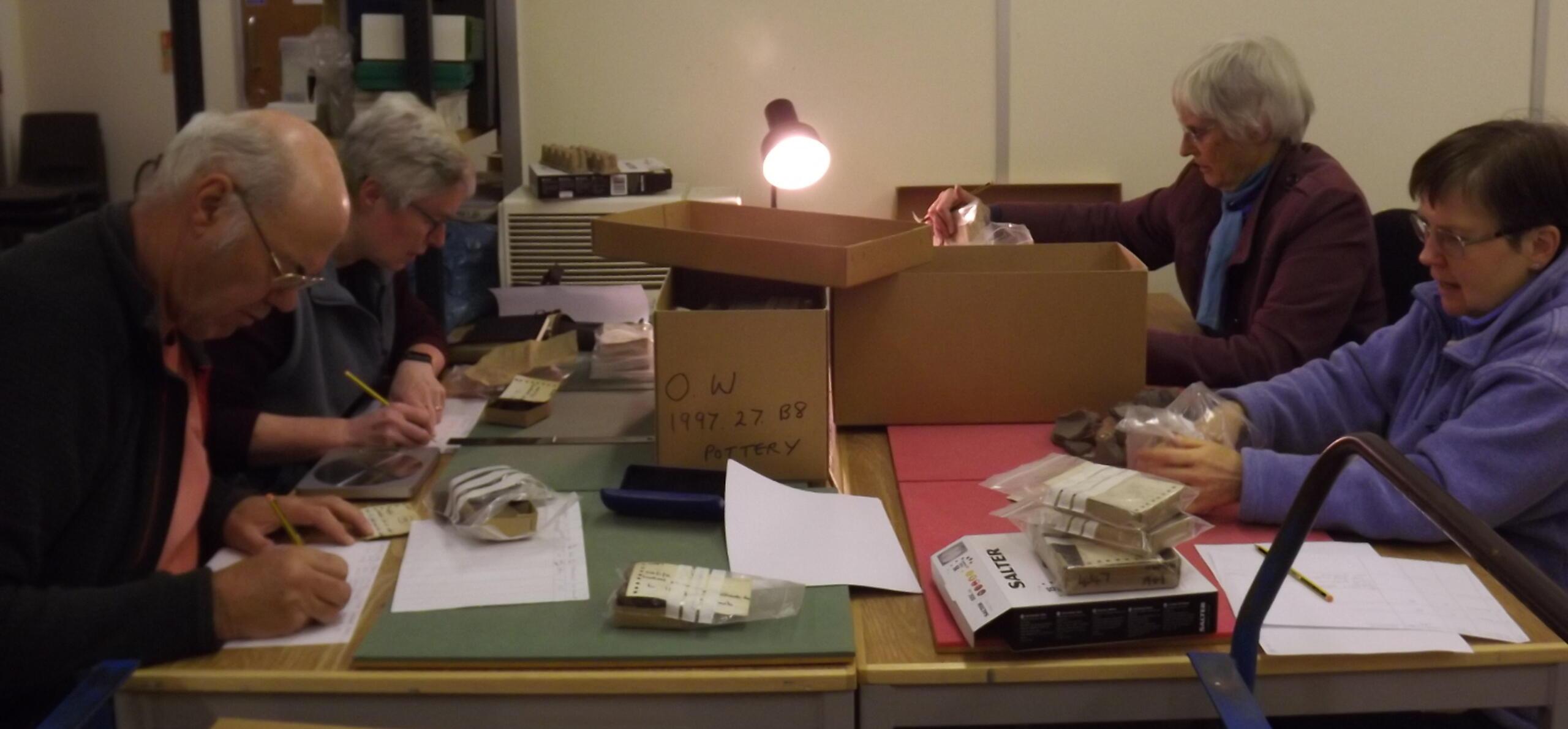Sophie Clarke, Finds Officer at Wessex Archaeology talks about her recent work on the Old Windsor cataloguing project at the Reading Museum stores, with contributions from project volunteers Beth Asbury, Janet Firth and Jill York.
What would a Saxon Palace look like? Who would have lived there? What kind of tools would they have used in everyday life? What could we learn from the material remains?
These were the kind of questions pondered over during the Old Windsor cataloguing project at the Reading Museum store.
For 7 weeks staff from Wessex Archaeology, under the direction of Berkshire Archaeology, and a team of volunteers worked together to quantify the material archive from an archaeological excavation that took place in Old Windsor between 1953 and 1958. Dr Brian Hope-Taylor was the archaeologist who launched the dig, aiming to reveal the location of a historically recorded Saxon Palace, possibly an original base for Edward the Confessor!
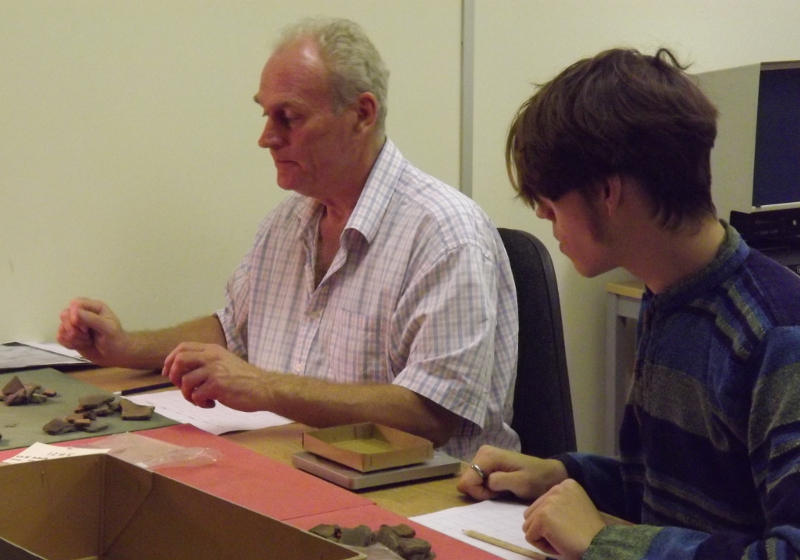
Old Windsor finds cataloguing
However, the results of this nationally significant site were never published. The finds were given to Reading Museum, while the paper records are held by Historic Environment Scotland in Edinburgh. As a result, Wessex Archaeology was commissioned by Berkshire Archaeology, and with the kind co-operation of Reading Museum, to launch a volunteer project in order to quantify the finds.
The sessions for the project ran two days a week in Reading Museum Store. For each bag of finds, the task was simple: record the number and weight of fragments by material type, together with any contextual information written on the bag. This information was then entered into a database. This provided a consistent recording system, which is required to understand the distributional and stratigraphic evidence for site interpretation. It will also assist museum staff in their continued curation of the archive.
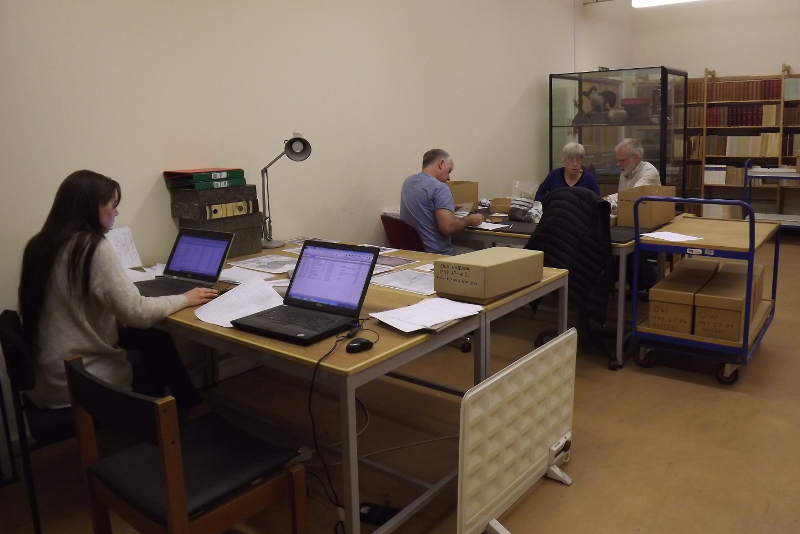
Old Windsor volunteers at Reading Museum stores
All volunteers involved worked to an excellent standard with close attention to detail – everyone is now keen to see the results! After just a few weeks of data quantification, over 38,000 sherds of pottery and over 40,000 fragments of animal bone were counted and recorded, and the recording of other material types was ongoing up until the very last day of the project.
The opportunity to be involved in a project that has such a high significance within our history and heritage was very rewarding. It is hoped that these results will support further work on the interpretation of Dr Hope-Taylor’s excavations.
Beth Asbury, Assistant Archaeologist (HER and Outreach), West Berkshire Council, one of the project volunteers commented on the importance of the work and her enjoyment in participating in the project:
“I’m really glad to have been part of the project. It is extremely important that the results of archaeological fieldwork are published and the corresponding object archive made accessible for future researchers because, otherwise, that information could be lost and the work may as well have never taken place. With a site as important and interesting to Berkshire as Old Windsor, it’s fantastic that Berkshire Archaeology have been awarded funding to catalogue the work undertaken there in the 1950s. The project also gave me food for thought on the collaborative potential of volunteers, commercial and local authority archaeologists on projects such as this. I’m really looking forward to finding out more as the project progresses!"
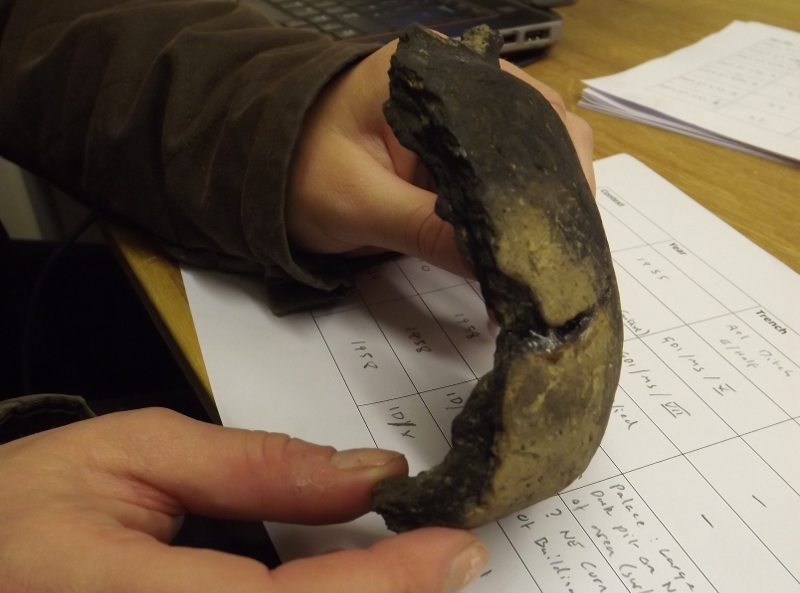
Project volunteer holding a pot sherd
Janet Firth with contributions from Gill Holmes and Jill York, also project volunteers, added:
“It was soon realised that the idea of finishing by the end of October was doomed. But it was, as one volunteer said: ‘fun to be involved with such a lively bunch of volunteers for the Old Windsor project’. It was great to meet members of Berkshire Archaeological Society, the Old Windsor Parish Council and at least one student from the University of Reading Archaeology Department. Gradually too there was a stronger feeling of being a proper team of professionals and volunteers as we counted, weighed and recorded on paper the contents of every bag. Overall it felt very worthwhile to be working on an important but neglected assemblage and hopefully making a difference. We look forward to hearing about the next steps”.
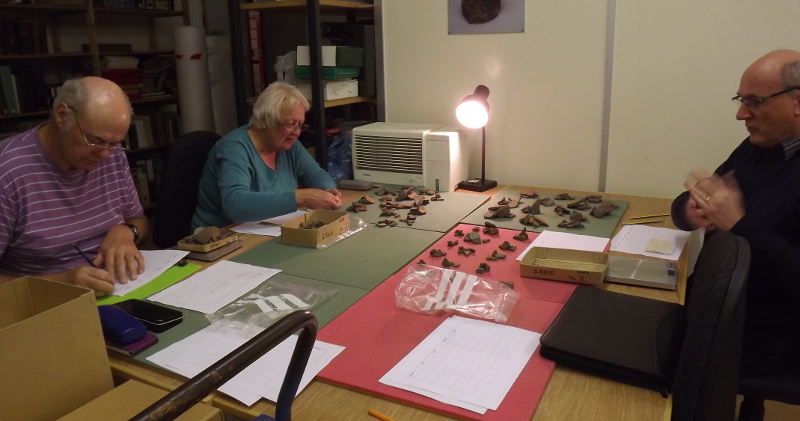
Old Windsor volunteers hard at work cataloguing pot sherds
The project was funded by Historic England and organised and managed by Roland Smith of Berkshire Archaeology and Lorraine Mepham, Wessex Archaeology, with kind assistance from volunteers and Reading Museum staff. The data collected from the project is currently under analysis by Roland Smith and will be published upon completion. By completing this task, a full quantification of the finds recovered from the site can be presented for the first time. This also creates a potential for further interpretation of the archaeology
Roland Smith will also be writing a guest blog on his findings in due course so watch this space.
